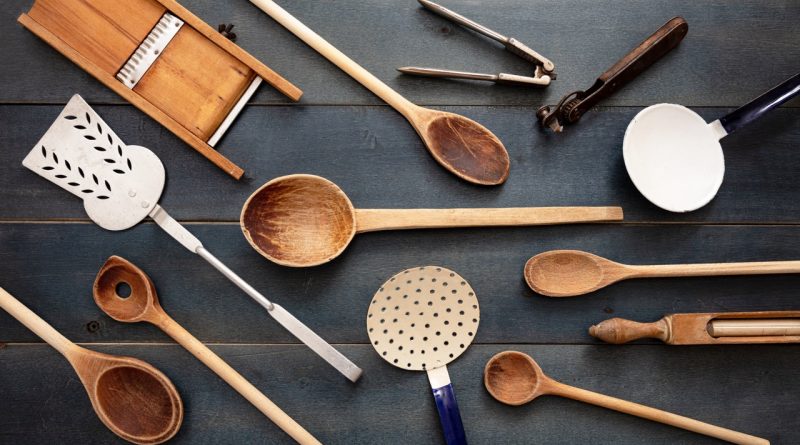The Differences Between Zwilling, Miyabi, And Staub
In the world of culinary tools, the brands Zwilling, Miyabi, and Staub stand out for their quality and craftsmanship. Each offers a unique blend of history, design, and functionality, appealing to both professional chefs and home cooks alike. Understanding the differences between these brands can help you make an informed decision when selecting kitchen essentials. This article will explore their origins, craftsmanship, functionality, and how to choose the right one for your culinary needs.
Comparing Zwilling, Miyabi, and Staub: An Overview
Zwilling, founded in 1731 in Germany, is one of the oldest and most respected knife manufacturers in the world. Known for its innovative designs and commitment to quality, Zwilling produces a wide range of kitchen knives, cookware, and kitchen gadgets. The brand is synonymous with durability and precision, making it a favorite among culinary professionals.
Miyabi, on the other hand, is a Japanese brand that specializes in high-end knives. Established under the Zwilling umbrella, Miyabi combines traditional Japanese craftsmanship with modern technology. Each knife is meticulously crafted, often featuring beautiful Damascus patterns, which not only enhance aesthetics but also contribute to the blade’s strength and sharpness. This brand caters to those who appreciate the art of knife-making and seek exceptional performance.
Staub is renowned for its premium cast iron cookware, originating from France. The brand is celebrated for its enameled cast iron pots that excel in heat retention and even cooking. Staub’s products are often favored for slow cooking and braising, making them a staple in many kitchens. The distinct design and vibrant colors of Staub cookware also make it an attractive addition to any dining table.
Craftsmanship and Materials: What Sets Them Apart
Zwilling’s knives are crafted using high-carbon stainless steel, ensuring a balance of sharpness, durability, and corrosion resistance. The brand employs a unique ice-hardening technique, which enhances the strength of the blades while maintaining their flexibility. Zwilling’s commitment to quality is evident in its rigorous manufacturing processes, which include hand-honing each blade for optimal sharpness.
Miyabi takes craftsmanship to another level by embracing traditional Japanese techniques. Each knife often features a core made from high-carbon steel surrounded by multiple layers of softer stainless steel, creating a stunning Damascus pattern. This multi-layered construction not only provides superior sharpness but also enhances the blade’s durability. Additionally, Miyabi knives often include ergonomic handles made from natural materials, ensuring comfort during extended use.
Staub’s cookware is made from high-quality cast iron, which is renowned for its exceptional heat retention and distribution. The brand’s unique enameling process allows for a variety of colors and finishes, while also providing a non-reactive cooking surface. Staub’s attention to detail is reflected in its signature self-basting lids, which help retain moisture and flavor during cooking. This level of craftsmanship makes Staub a favorite for both everyday cooking and special occasions.
Functionality and Performance: A Practical Analysis
When it comes to functionality, Zwilling knives are designed for versatility. They cater to a variety of cutting techniques, whether you’re chopping vegetables or filleting fish. The razor-sharp edges and balance of Zwilling knives enable precise cuts and effortless handling, which is essential for both novice and experienced cooks. Their durability ensures that these knives can withstand the rigors of daily use without dulling quickly.
Miyabi knives are often regarded as the pinnacle of performance. Their exceptional sharpness allows for clean cuts, which is particularly beneficial when working with delicate ingredients like fish or herbs. The lightweight nature of Miyabi knives also enhances maneuverability, making them ideal for intricate tasks. However, the high level of craftsmanship means that they may require more care, such as hand washing and regular honing, to maintain their performance.
In the realm of cookware, Staub excels in creating products that yield excellent results. The even heat distribution of cast iron ensures that food is cooked uniformly, which is crucial for recipes requiring precise temperatures. Staub’s enamel coating makes it easy to clean and allows for a beautiful presentation when serving. Whether you’re baking bread or simmering a stew, Staub cookware delivers consistent and delicious results, making it a reliable choice for any culinary enthusiast.
Choosing the Right Brand for Your Culinary Needs
Choosing between Zwilling, Miyabi, and Staub ultimately depends on your cooking style and preference. If you require versatility in your knife collection and appreciate a blend of German precision and craftsmanship, Zwilling may be the best fit. Their wide range of products ensures that you can find the right tool for any task, whether you’re a home cook or a professional chef.
If you are drawn to the artistry of Japanese knives and prioritize sharpness and precision in your culinary tasks, Miyabi is an excellent choice. Their handcrafted knives not only perform exceptionally but also serve as stunning pieces in your kitchen. However, be prepared to invest time in maintenance to keep these high-performance tools in optimal condition.
For those who love cooking with cast iron and seek durability and aesthetic appeal in their cookware, Staub is the go-to brand. Its ability to retain heat and enhance flavor makes it ideal for slow-cooked dishes. Additionally, the vibrant colors and elegant design mean that Staub cookware can transition seamlessly from the kitchen to the dining table. Whichever brand you choose, understanding their unique features will help you enhance your culinary experience.
In conclusion, Zwilling, Miyabi, and Staub each offer distinct advantages that cater to different culinary needs. By understanding the craftsmanship, functionality, and unique characteristics of each brand, you can make an informed decision that aligns with your cooking style. Whether you prioritize precision in your knives or the durability of your cookware, investing in quality kitchen tools is essential for elevating your culinary adventures.
